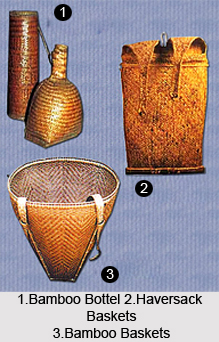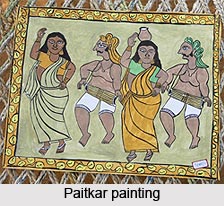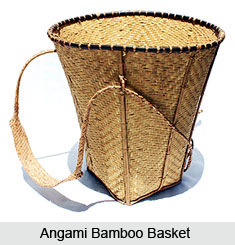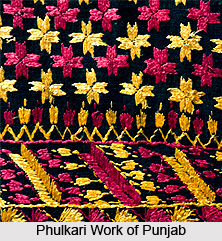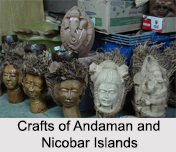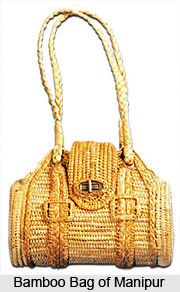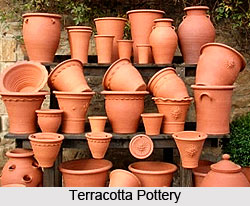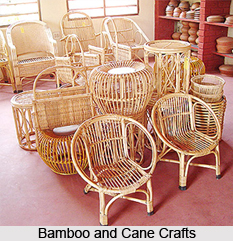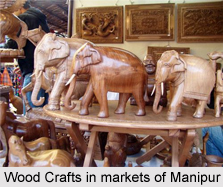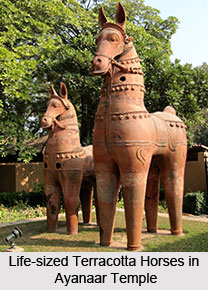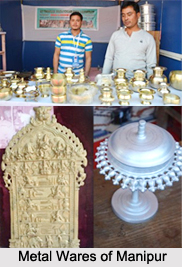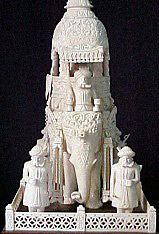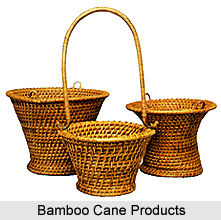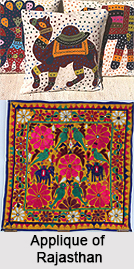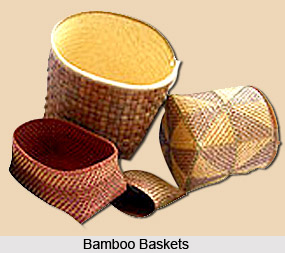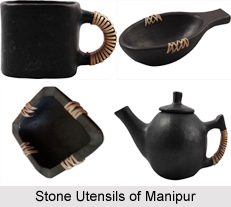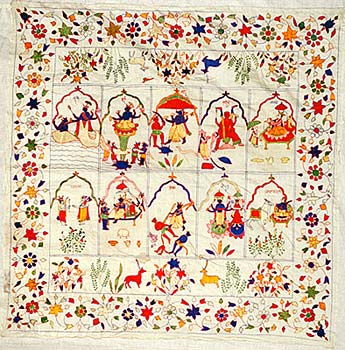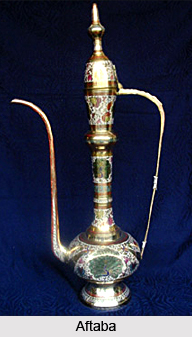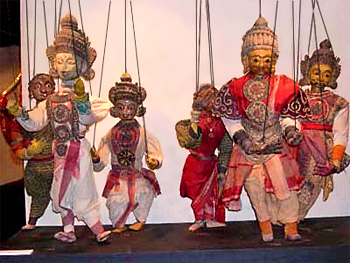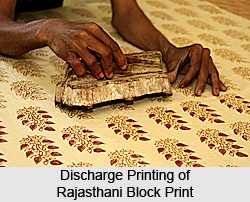 Rajasthan is the most colourful state of India and is reflected in its forms of textiles. The multi coloured scarves and block printings are unique of the state. The tradition of printing with finely engraved wooden blocks distinguishes it from other states. The block printing entered Rajasthan originally from Gujarat and spread mainly to Jaipur, Bangru, Sanganer, Pali and Barmer. Earlier, the dyes used in Block printing were only vegetable dyes but now chemical dyes have taken over.
Rajasthan is the most colourful state of India and is reflected in its forms of textiles. The multi coloured scarves and block printings are unique of the state. The tradition of printing with finely engraved wooden blocks distinguishes it from other states. The block printing entered Rajasthan originally from Gujarat and spread mainly to Jaipur, Bangru, Sanganer, Pali and Barmer. Earlier, the dyes used in Block printing were only vegetable dyes but now chemical dyes have taken over.
The block printing in Rajasthan is a very arduous work but the most important factor of this printing process is its accuracy. In block prints, colourful prints of birds, animals, human figures, gods and goddesses are very popular. To print those colourful blocks in the Rajasthani textiles, the cloth is first placed flat on a table or bench. Now, a freshly dipped block is hand pressed on that cloth to make a continuous, intertwining pattern. The block holds dye if the unique colour of the clothes is to be conserved. If the cloth is to be dyed then the block is used to apply a waterproof resistant material like clay, resin or wax, which isolates the pattern which is not needed to colour. In the next step of block printing, when the cloth is dyed, the pattern comes out in reverse. In the block printing, generally the natural dyes and pigments are used but recently the synthetic dyes have become popular because of its cheap availability. In the block printing of Rajasthan, the fabric is steamed, washed in water and dried in the sun and then in the last stage it is ironed.
The printers of Bagru and Sanganer block printing are of Persian origin and they mainly prefer for the floral motifs. These are considered as the more sophisticated designs. This Sanganer block print has a white or pale background ornamented with colourful twigs or sprays. The Calico printed bed covers; quilts and saris are famous in Sanganer block prints. In the Calico printing process, at first the outlines are printed and the colour is given. Here the bold patterns and colours are liked most. The continuous diagonal rows are printed repeatedly. Another popular printing here is the Doo Rookhi printing, in which printing is done on both sides of the cloth. The dyes used in Sanganer are famous worldwide. Two of the textiles of Sanganer are tested for their genotoxicity, which shows these dyes can induce genotoxic responses and needed to use with caution.
Again, the Bagru block print has a light brown background and it was initially made mainly for the peasants. But the block printed cloth loses its original glowing colour after number of washes. Hence, the dry-cleaning process is always suggested to retain its glow. Syhi-Begar prints and Dabu prints are famous in Bagru block printing. The first one has a combination of black and yellow ochre or cream. And in the second one, few portions of the cloth are hidden from the dye by applying a resistant paste.
The Barmer block print of Rajasthan is famous for its prints of red chilies with blue-black outlines and there are flower-laden trees in the surroundings. The other famous prints are of horses, camels, peacocks and lions, known as `Sikar` and `Shekahawat` prints. Kalamkari block prints are done with floral motifs and pastel colours.
There are different techniques of Block printing in Rajashtan. These are-
1. Direct Printing- Here, the cotton or silk cloth is bleached first and then the fabric is dyed. Then, by using the carved blocks, the fabric is printed. The outlines blocks are done first and then the inside is filled with colour.
2. Resist Printing- In this technique of block print, the areas which are not needed to colour, are protected from the dye by covering with a mixture of clay and resin. After dying the fabric, it spreads in the protected areas through cracks. Now, block prints are used to get more designs.
3. Discharge Printing- In this type of block printing, first the fabric is dyed. Then the dye is removed from the unwanted portions using a chemical. These portions are then designed with different colour.
The block printed cloths of Rajasthan are very popular in all over the country. Even, the tourists coming to the state hugely get attracted to these cloths. It has to be one of the revenue earning way for the state.
